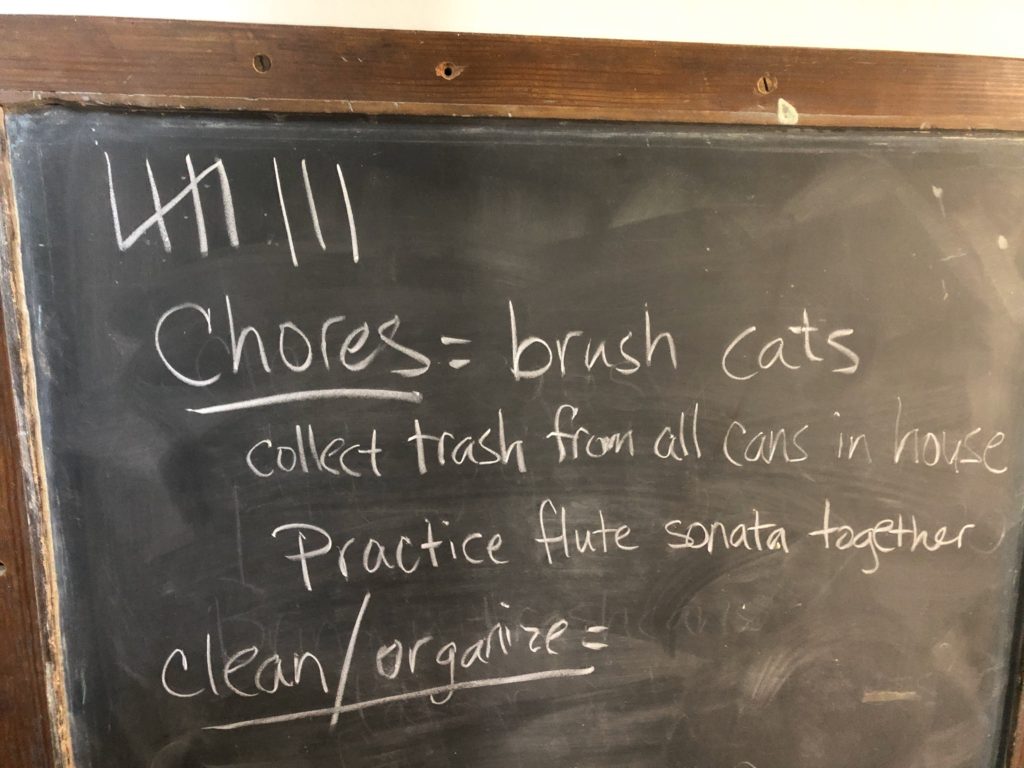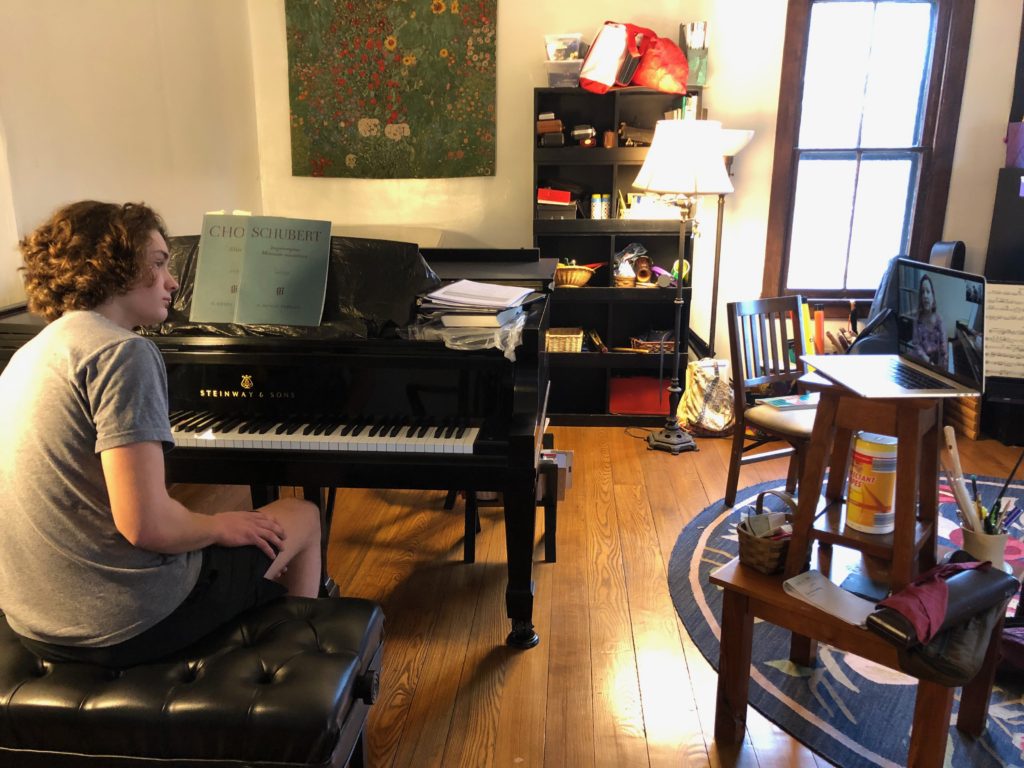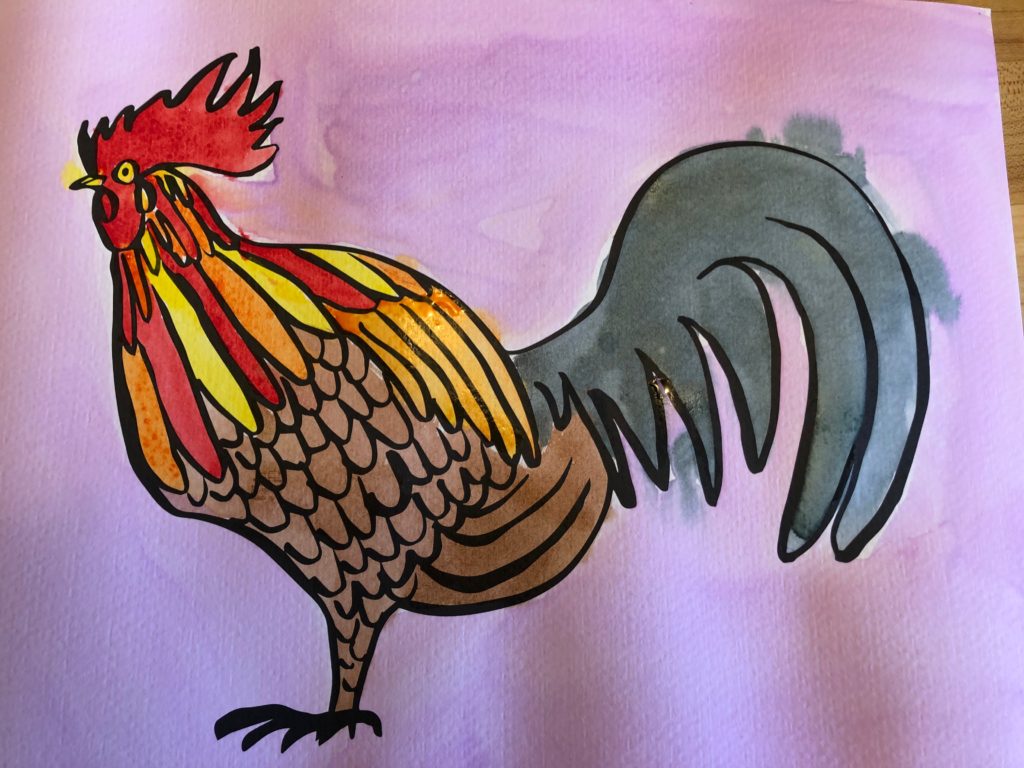A New Normal: Thoughts on COVID-19 Pandemic
As I write this, our household has been isolating for 17 days due to the coronavirus / COVID-19 pandemic. We live in Ohio, one of the most proactive states for mandatory closures. Fortunately, all four of us in the household remain healthy.
Daily Schedule
We realized early on that a schedule would be necessary for our physical, mental, and intellectual health. My husband and I agreed that we would let the kids adopt a more organic sleep schedule. Research has shown that the circadian rhythms of teens favor more nighttime activity. We have definitely noticed this, but we also know that a consistent sleep schedule is important. Therefore, the kids wake up each day around 9:00 am and are able to stay up as late as they want. We have noticed that they are much happier and no longer complaining about being tired.
Every day, the kids are asked to complete one (or more) task from each of six categories. I write some things on the chalkboard.

Our Daily Routine
To be completed in any order, anytime before using the Xbox.

- Practice. Of course, this is our #1 priority during self-quarantine and anytime! Our son is a pianist and he likes to get his practicing finished in the morning. He has always been a self-starter who likes to get his jobs done and have free time. Our daughter is a flutist. She procrastinates more and often has to be reminded to practice. During this time, we have learned of two new flute competitions, which she will be entering. This has been a good motivator.
- Academic work. Although the kids have an online school, the work is not very much. In fact, our son completed all of his work in four classes for the entire week on Monday. Regardless, he will have to find something academic to do every day, even on the weekends. We are flexible about what this might be – even working on his driver’s ed program or reading a book counts toward his goal.
- Creative project. Our daughter received a watercolor book for her birthday. She enjoys painting one picture a day. Our son has been making new recipes (banana bread, fried rice, and grilled chicken) for his creative work.
- Chores. Even in the time before, the kids always have chores, but now we ask them to do a few more. In addition to their regular chores, they are asked to pitch in with the vacuuming, taking out the trash, washing the windows, etc.
- Cleaning or Organizing or Fixing Project. We live in an old house and have a big backyard. There’s always something to do. Last weekend, we rented a log splitter and chopped firewood for next season. Yesterday, we cleaned out the landscaping beds to make them ready for planting. The projects change daily, and we have a master list of everything that needs to be done.
- Exercise. Both kids are sad that they won’t be able to play spring sports at school, but they are able to practice ball together in the yard. On days with bad weather, we have an indoor exercise bike.

A Different Relationship with Time
I have found myself shifting subtly during this time of isolation. As I move through my day, I notice how many times I think “I’ll do that later.” For instance, I was going downstairs and noticed a coffee mug that needed to go to the kitchen. Too many times, I’ll think to myself “I’ll grab that next time.” But this time I stopped and I picked it up. If not now, then when will there ever be a better time? Life is less hectic. No longer and I rushing headlong into the next thing. My work has slowed, driving the kids to activities has stopped. I’ve started some big projects, ones that felt overwhelming in their scope or commitment.
Likewise, I am encouraging my flute students to slow down. There’s no rush to prepare for solo and ensemble contest. It’s canceled this year. There’s no recital coming up, no lack of time because of school sports or homework. I’m challenging my students to think about the things they have put off because they didn’t think they had the time to devote to it. Perhaps this is learning vibrato or working on double tonguing. Maybe it’s working on a difficult piece, one line at a time and really using the woodshedding ideas that we talk about often (but maybe don’t use.)
Creativity and Flexibility
I am amazed at the explosion of creative ideas being offered by musicians and artists of all kinds during the pandemic. My Facebook feed is full of people offering live concerts and sharing ideas. This is happening despite many musicians losing a lot of income due to canceled performances. Their generosity is inspiring.
There is much that we have had to give up: rehearsals and lessons in-person, going to live concerts, hugging each other, leaning over to mark a student’s music for her/him, but there are many lessons that I’ve learned. Removing all in-person interaction makes us realize what is essential and important. I do think it will give us a new appreciation of the things we have lost once this is over.

Like many teachers, I have moved all of my students to online video lessons during the pandemic. We use Zoom, FaceTime, and Facebook. All three platforms work well for me, though Zoom is my favorite. Even our church worship services have moved online. After three weeks, and a steep learning curve, I am finding that I like this new format very much!

Yesterday, my students and I had fun trying out the filters on FaceTime. That’s something we can’t do in regular lessons!
Read about the positive side of online lessons in this blog post… and some of the challenges here.
Technology
In addition to video lessons and online church, there are many other technologies that are making this time easier for musicians. I have just started working with the Acapella App for making videos with multiple players/singers.
I’ve learned too how to work from home. There were things that I thought had to be done in-person, but we’ve figured out ways to do things differently. I don’t miss driving my car. Video meetings don’t have the same energy or collaboration as ones in the conference room, but often they are more efficient.
For musicians, many new tools are being developed right now. There are too many to list, but let me highlight a few that have hit my inbox:
Chamber Music Connection, an organization that my kids have participated in, is creating a new digital hub called iSTEM Connect.
Sheet Music Plus has created a guide to online music learning resources.
How to make bagpipes out of recorders and a trash bag.
A huge list of online teaching resources.
My email inbox is filled with similar resources from local friends and international companies. It is truly heartwarming to see how the musical community is coming together and responding generously to this crisis.
Reflections on the Pandemic
I hope that when the world returns to normal and the pandemic is under control, we can all be a little more deliberate about what we let back into our lives. Will we stop to consider what is essential or will we race to the comfort of our old patterns?
Never in my life have I been more aware of how connected we are. We are, as Martin Luther King, Jr said, “caught in an inescapable web of mutuality, tied in a single garment of destiny. Whatever affects one directly, affects all indirectly.”
My heart goes out to all who struggle during this time. Many are suffering economically from the sudden change. We’ve never seen anything like this before and the uncertainty causes a lot of anxiety.
Nonetheless, I am hopeful that this “time-out” will help us gain some perspectives on our lives. We can give the Earth a chance to breathe with less pollution. I am using these days to reconnect with my family, practice music, do things around the house, rest, and consider the peace that comes with the quiet.
6 comments